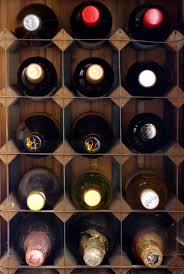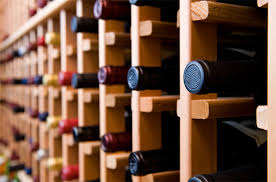So you bought some wine that you’re not planning on drinking right away. Now what do you do with it?
First off, it’s useful to remember that only a small percentage of fine wines on the market benefit from long-term aging. Most wines are best enjoyed within a few years of release. A vineyard worth it’s salt won’t sell you a bottle of wine you can’t drink that evening if you wanted to. If you’re looking to buy wines to mature, you should really consider investing in professional grade storage—a totally different ballgame.
For us mere mortals, however, following a few simple guidelines should keep your wines safe until you’re ready to drink them.
Keep It Cool
Heat is enemy number one for wine. Temperatures higher than 70° F will age a wine more quickly than is usually desirable. And if it gets too much hotter, your wine may get “cooked,” resulting in flat aromas and flavors. The ideal temperature range is between 45° F and 65° F (and 55° F is often cited as close to perfect), though this isn’t an exact science. Don’t fret too much if your storage runs a couple degrees warmer, as long as you’re opening the bottles within a few years of their release.
… But Not Too Cool
Keeping wines in your household refrigerator is fine for up to a couple months, but it’s not a good bet for the longer term. The average fridge temp falls well below 45° F to safely store perishable foods, and the lack of moisture could eventually dry out corks, which might allow air to seep into the bottles and damage the wine. Also, don’t keep your wine somewhere it could freeze (I have personally forgotten wine for hours in the freezer). If the liquid starts turning to ice, it could expand enough to push the cork out or break the bottle.
Steady as She Goes
More important than worrying about achieving a perfect 55°F is avoiding the landmines of rapid, extreme or frequent temperature swings. On top of cooked flavors, the expansion and contraction of the liquid inside the bottle might push the cork out or cause seepage. Aim for consistency, but don’t get paranoid about minor temperature fluctuations; wines may see worse in transit from the winery to the store. (Even if heat has caused wine to seep out past the cork, that doesn’t always mean the wine is ruined. There’s no way to know until you open it.)
Made in the Shade
Light, especially sunlight, can pose a potential problem for long-term storage. The sun’s UV rays can degrade and prematurely age wine. One of the reasons why vintners use colored glass bottles? They’re like sunglasses for wine. Light from household bulbs probably won’t damage the wine itself, but can fade your labels in the long run. Incandescent bulbs may be a bit safer than fluorescent bulbs, which do emit very small amounts of ultraviolet light.
 Lay Down the Law…er, Bottle
Lay Down the Law…er, Bottle
Traditionally, bottles have been stored on their sides in order to keep the liquid up against the cork, which theoretically should keep the cork from drying out. If you’re planning on drinking these bottles in the near- to mid-term, or if the bottles have alternative closures (screw caps, glass or plastic corks), this is not necessary. We will say this, however: Horizontal racking is a space-efficient way to store your bottles, and it definitely can’t harm your wines.
Handle with Care
There are theories that vibration could damage wine in the long term by speeding up the chemical reactions in the liquid. Some serious collectors fret about even the subtle vibrations caused by electronic appliances, though there’s little evidence documenting the impacts of this. Significant vibrations could possibly disturb the sediment in older wines and keep them from settling, potentially making them unpleasantly gritty. Unless you live above a train station or are hosting rock concerts, is this likely to be a problem for your short-term storage? No.
So… Where Should I Keep My Bottles?
If you haven’t been blessed with a cool, not-too-damp basement that can double as a cellar, you can improvise with some simple racks in a safe place. Rule out your kitchen, laundry room, or porch, if possible. Hot temperatures can affect your wines, and look for a location not directly in line with light pouring in from a window. You could also buy a small wine cooler and follow the same guidelines: If you keep your wine fridge in a cool place, it won’t have to work so hard, keeping your energy bill down.
Perhaps there is a little-used closet or other vacant storage area that could be re-purposed to store wine? (my sister keeps her’s in the closet in their spare bedroom) If you have a suitable dark, stable space that’s not too damp or dry, but it is too warm, you might consider investing in a home wine cooler. There are some inexpensive systems for small spaces, but in most cases, this is getting into professional wine storage.
When is it time to upgrade your storage conditions? Ask yourself this: How much did you spend last year on your wine habit? If a $300 cooling unit represents less than 25 percent of your annual wine-buying budget, it’s time to think about it more carefully. Might as well protect your investment.
One other piece of advice from collectors: Whatever number you’re thinking of when it comes to bottle capacity, double it. Once you’ve started accumulating wines to drink later, it’s hard to stop. And really, would you want to?


